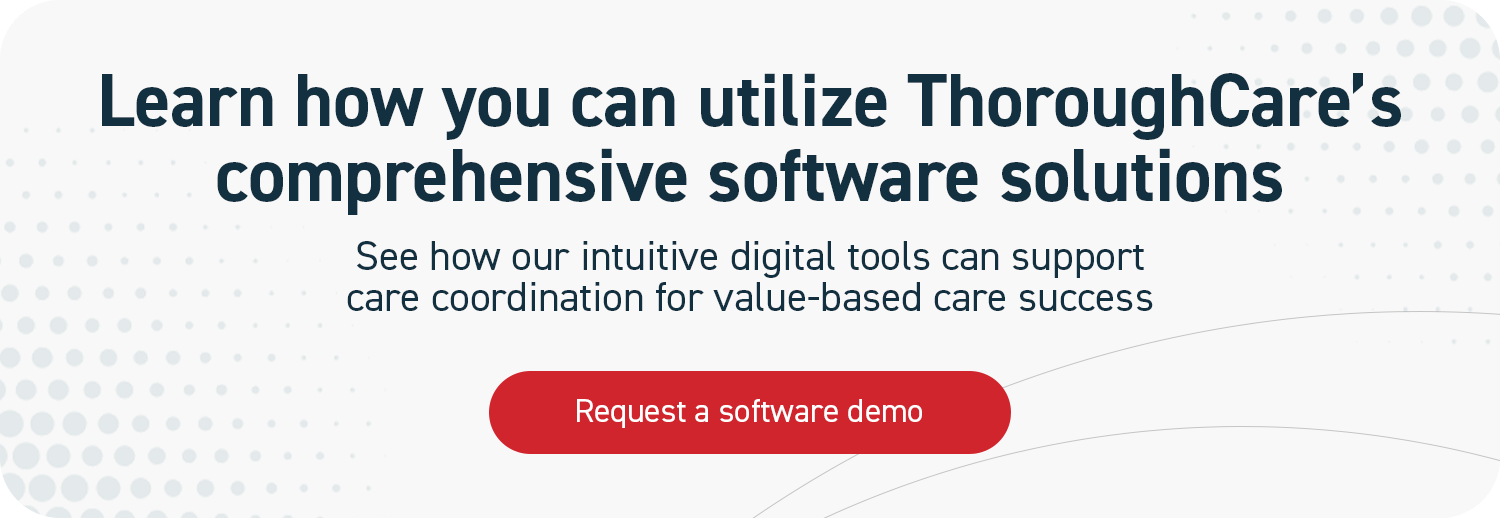advanced primary care management
How Does Advanced Primary Care Management Compare to CCM and PCM?
Providers and care management companies deciding whether to offer Advanced Primary Care Management (APCM), a new Medicare program, may be confused about how it relates to existing services.
Launched in 2025, APCM is similar to other care management programs, but it’s profoundly different from others. In this article, we’ll compare APCM to Chronic Care Management (CCM) and Principal Care Management (PCM).
We’ll cover key areas, including requirements, payments, and billing codes. Additionally, we’ll offer thoughts on ways APCM could be either a strategic replacement for some programs or a complement to existing ones.
What are the main differences?
The main differences between Chronic Care Management, Principal Care Management, and Advanced Primary Care Management relate to four key areas:
- Coding: APCM’s coding and rates are based on the number of chronic conditions and Qualified Medicare Beneficiary status
- No Minimum time: APCM does not have minimum time requirements
- Chronic Disease: APCM allows enrollment for all Medicare beneficiaries and not just those with one or more chronic conditions
- Quality: APCM requires quality measurement, whereas CCM and PCM do not
Which Medicare beneficiaries are eligible for APCM, CCM, and PCM?
The main differences among the three programs are that PCM and CCM require one or more chronic diseases, while APCM has no chronic disease requirement. The second critical difference is that PCM and CCM are time-based, and APCM has no time minimums.

Table 1: Crosswalk of Medicare beneficiaries eligible for PCM, CCM, and APCM
Which healthcare professionals can bill and deliver PCM, CCM, and APCM services?
As shown in Table 2, there are subtle differences in the healthcare professionals who are authorized to bill and deliver PCM and CCM versus APCM. All three allow “incident to” supervision and the ability to outsource certain types of activities to a third-party care management company.
Learn details about each program’s requirements on who may bill and deliver care management services:

Table 2: Crosswalk of which healthcare professionals who can bill and deliver PCM, CCM, and APCM
How are CMS program requirements similar and different across PCM, CCM, and APCM?
APCM shares many requirements with PCM and CCM. For example, all programs require a comprehensive and electronic care plan. However, PCM and CCM offer more details on what should be included in that plan.
Key differences in the APCM program include its patient population data management and performance measurement requirements, which are not included in PCM or CCM.
Table 3 provides a crosswalk of key program requirements, indicating where the differences are subtle or significant.

Table 3: Crosswalk of key program requirements for PCM, CCM, and APCM
What CPT codes and payment rates are reimbursable for PCM, CCM, and APCM?
Differences in billing rates for each program’s CPT codes reflect the distinct focus and characteristics of the three programs. PCM and CCM are time-based programs and have more CPT codes to capture various time types for auxiliary staff and physicians.
CCM also offers two CPT codes to cover patient complexity, which requires moderate to high-complexity medical decision-making by the physician or other billing practitioner.
As a bundled program, APCM offers three CPT codes based on risk stratification.
The links just below cover all available CPT codes for these three programs, highlighting current billable rates and how each program accounts for time or services. Learn more about each program’s billing statutes:
Can PCM, CCM, or APCM programs run concurrently? Can providers offer multiple programs?
A patient may only enroll in one of these programs—PCM, CCM, or APCM—in any given billing month. Except, patients can be enrolled in both CCM and PCM when:
- They have two different providers offering each program (For example, a specialist enrolls their patient in PCM while the primary care doctor offers the patient CCM).
- Different conditions are managed in each program.
- There are two care plans for each corresponding program and condition
However, a single provider may decide to offer more than one of the programs, such as APCM and CCM services, to give them the flexibility to suggest a particular program to individual patients or patient cohorts.
Which program is right for which patient?
There are scenarios when patients may be more suited to one program than another. Offering more than one care management program allows providers and care management companies to enroll most Medicare beneficiaries.
For instance, combining CCM with APCM enables a provider to enroll both a patient with zero chronic disease, a high-risk QMB, and a patient with multiple chronic illnesses and a complex health picture.
Table 4 outlines which types of patients may be suitable for each program. Additionally, providers should look at the economic value that each program can deliver, as well as how managing more than one program in a single software platform provides economies of scale and greater efficiency across multiple offerings.

Table 4: Crosswalk of types of patients best served by PCM, CCM, and APCM
Questions to help narrow which care management programs to offer
When providers or leaders at care management companies want to decide to offer one or more care management programs, such as PCM, CCM, and APCM, consider these questions to assist in segmenting and identifying patient cohorts that may be more suitable for one or more programs.
Number of chronic conditions
- How many Medicare patients have zero, one, two, or more chronic conditions?
- Organize the patient list by number of chronic illnesses.
Qualified Medicare Beneficiary status
- How many patients are Qualified Medicare Beneficiaries?
- Identify those Medicare beneficiaries who may have low income or are dually eligible for Medicare and Medicaid.
- Of those patients, how many have two or more chronic conditions?
Decision-making complexity
- How many patients with two or more chronic illnesses require additional time, calls, and moderate-to-high levels of clinical decision-making and monitoring?
- Which patients are at the highest risk for hospitalization, emergency visits, or death in the next 12 months?
These questions help quantify which patients may benefit from one or more care management programs. Identifying patient groups and understanding each program’s requirements provides details that indicate if one or more programs would benefit patients and the practice.
ThoroughCare offers one platform to manage multiple care management programs
ThoroughCare offers a comprehensive software platform to streamline care management across program types. Our tools automatically account for all of Medicare’s rules and requirements while documenting service records for each program.
Plus, ThoroughCare makes it easy to engage patients and maximize service time and activities. To get started, simply enroll patients in any new care management program.
Key questions answered
What are the main differences among Principal Care Management, Chronic Care Management, and Advanced Primary Care Management programs?
The main differences among the three programs are that PCM and CCM require one or more chronic diseases, while APCM has no chronic disease requirement. The second critical difference is that PCM and CCM are time-based, and APCM has no time minimums.
Additionally, the three programs differ in two other areas, including:
- Coding - APCM’s coding and rates are based on patient risk stratification and not time, like CCM and PCM
- Quality - APCM requires quality measurement, whereas CCM and PCM do not


.jpg)
